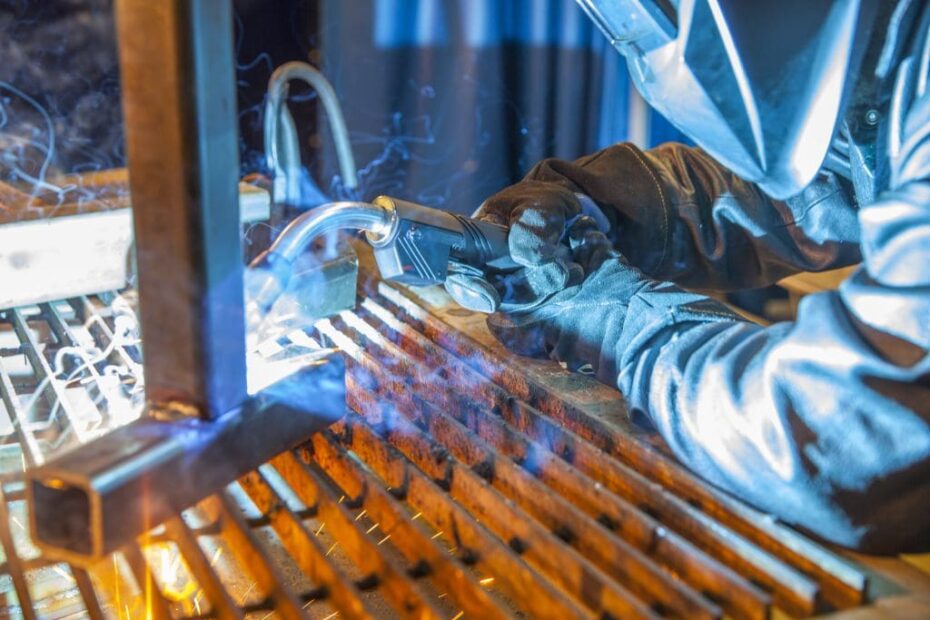Hot shot trucking compliance refers to adherence to regulations and requirements in the hot shot trucking industry. Hot shot trucking is a specialized form of trucking that involves the transportation of smaller, time-sensitive loads using trucks that are typically smaller than traditional tractor-trailers.
Compliance with regulations is essential for hot shot trucking companies to ensure safety, legality, and efficiency in their operations. This includes obtaining the necessary permits, licenses, and insurance coverage, as well as following rules and guidelines set by government agencies such as the Department of Transportation (DOT) and the Federal Motor Carrier Safety Administration (FMCSA).
By staying compliant, hot shot trucking companies can avoid penalties, maintain a positive reputation, and build trust with their clients. We will explore the key aspects of hot shot trucking compliance and provide insights on how to navigate the regulatory landscape effectively.
Understanding The Key Regulations For Success
Understanding the key regulations for success in hot shot trucking compliance is crucial. It ensures adherence to legal requirements, avoids penalties, and maintains a safe and efficient operation.
Hot shot trucking is a specialized form of trucking that involves the transportation of smaller, time-sensitive loads. It requires not only efficient logistics and reliable vehicles but also strict compliance with various regulations. Understanding these key regulations is essential for success in the hot shot trucking industry.
In this section, we will explore the main compliance requirements that hot shot trucking companies need to be aware of.
Overview Of Hot Shot Trucking Compliance Requirements
To operate legally and safely, hot shot trucking companies must adhere to several regulations, including those set by the Department of Transportation (DOT) and the Federal Motor Carrier Safety Administration (FMCSA). Key compliance requirements in hot shot trucking include:
- Department of Transportation (DOT) regulations:
- Hot shot trucking companies must obtain a DOT number, which is a unique identifier assigned to commercial vehicles involved in interstate commerce.
- DOT regulations require drivers to have a valid commercial driver’s license (CDL) with the appropriate endorsements for the type of vehicles they operate.
- Compliance with DOT regulations ensures that hot shot trucking companies meet the necessary safety standards and maintain proper documentation.
- Federal Motor Carrier Safety Administration (FMCSA) regulations:
- The FMCSA sets regulations regarding driver qualifications, vehicle maintenance, hours of service, and more. Hot shot trucking companies must comply with these regulations to ensure road safety.
- FMCSA regulations require hot shot trucking companies to have proper insurance coverage, maintain records of vehicle inspections, and follow guidelines for cargo securement.
Hours Of Service (Hos) Regulations
Hot shot trucking drivers must adhere to Hours of Service (HOS) regulations, which are designed to prevent driver fatigue and ensure road safety. These regulations include:
- Maximum driving hours: Drivers can be on duty for up to 14 hours, with a maximum of 11 hours of driving time. After reaching this limit, they must take a mandatory rest period.
- Restbreaks: Drivers are required to take regular breaks and have a minimum of 10 hours off-duty before starting a new shift.
- Weekly limits: Drivers must follow a 60/70-hour rule, which means they cannot drive for more than 60 hours in 7 consecutive days or 70 hours in 8 consecutive days.
Vehicle Maintenance And Inspection Requirements
To ensure the safety of both drivers and the public, hot shot trucking companies must properly maintain and inspect their vehicles. Key maintenance and inspection requirements include:
- Regular inspections: Hot shot trucking companies must perform pre-trip and post-trip inspections of their vehicles to identify and address any potential safety issues.
- Recordkeeping: Companies must keep detailed records of inspections, maintenance, and repairs. This helps demonstrate compliance and ensures vehicles are in good working condition.
Insurance And Liability Considerations
Hot shot trucking companies must carry adequate insurance coverage to protect themselves and their customers in the event of accidents or damage to cargo. Key insurance and liability considerations include:
- Liability insurance: Hot shot trucking companies must have liability insurance to cover potential damages or injuries caused by their operations.
- Cargo insurance: It is crucial to have cargo insurance to protect the value of the goods being transported. This provides peace of mind to both the company and the client.
Understanding and complying with these regulations is vital for hot shot trucking companies to operate legally, safely, and efficiently. By prioritizing compliance, these companies can build a reputation for reliability and professionalism, setting themselves up for success in the industry.

Credit: www.fiverr.com
Ensuring Proper Licensing And Documentation
Ensure hot shot trucking compliance by meticulously managing proper licensing and documentation. By adhering to these essential guidelines, businesses can avoid legal complications and maintain smooth operations.
Hot Shot Trucking Compliance:
Hot shot trucking is a fast-paced and dynamic industry that requires strict compliance with various licensing and documentation requirements. By ensuring you have the necessary licenses and documentation, you can operate your hot shot trucking business legally and avoid any potential penalties or setbacks.
Obtaining The Necessary Licenses And Permits:
When it comes to hot shot trucking, there are specific licenses and permits you need to obtain before hitting the road. These include:
- Commercial Driver’s License (CDL): A CDL is a must-have for anyone operating a commercial vehicle. It ensures that you have the necessary skills and knowledge to safely operate your hot shot truck.
- Motor Carrier (MC) number: To engage in interstate commerce, you need to obtain an MC number from the Federal Motor Carrier Safety Administration (FMCSA). This number acts as your unique identifier and must be displayed on your vehicle.
- USDOT number: The USDOT number serves as another identifier for your business. It is required for all commercial vehicles involved in interstate commerce and helps authorities track your compliance and safety records.
Required Documentation For Compliance:
In addition to obtaining the correct licenses and permits, you must also have the right documentation in place to ensure compliance. Here are some essential documents you should always have:
- Bill of lading: This document serves as a contract between you and your client. It contains important details, such as the type and quantity of goods being transported, their origin and destination, and the terms of delivery.
- Shipping manifest: A shipping manifest lists all the items being transported in your hot shot truck. It provides a comprehensive record of the cargo, helping you and the authorities ensure that everything is accounted for during transit.
- Proof of insurance: As a hot shot trucker, having proper insurance coverage is crucial. Make sure you have proof of insurance readily available, as it may be required in case of accidents or incidents on the road.
- Driver logs and records: Keeping accurate records of your hours of service, rest breaks, and overall driving activity is vital for compliance. These records help you demonstrate that you are adhering to federal regulations regarding maximum driving time and breaks.
By obtaining the necessary licenses and permits and ensuring you have the required documentation, you can maintain compliance within the hot shot trucking industry. Operating with the correct licenses and having proper documentation boosts your credibility as a professional trucker and builds trust with your clients.
Always remember to keep these important records readily accessible, as they may be requested during routine inspections or if any issues arise during transit. As a responsible hot shot trucker, staying compliant not only ensures your success but also contributes to the overall safety and integrity of the industry.
Managing Driver Compliance
Manage driver compliance in hot shot trucking to ensure adherence to regulations and avoid penalties. Stay on top of driver logs, vehicle maintenance, and safety measures to maintain a compliant and efficient operation.
Managing driver compliance is crucial for hot shot trucking companies to ensure safe and efficient operations. From hiring qualified drivers to adhering to various regulatory requirements, careful management is essential to maintain compliance. In this section, we will delve into the key aspects of managing driver compliance, including hiring qualified drivers, conducting background checks, drug and alcohol testing, Hours of Service (HOS) compliance, electronic logging device (ELD) requirements, and driver training.
Hiring Qualified Drivers:
- Conduct thorough interviews to assess the qualifications and experience of potential drivers.
- Check driving records to ensure they have a clean and safe driving history.
- Verify their commercial driver’s license (CDL) and any necessary endorsements.
- Evaluate their knowledge of safety regulations and commitment to following them.
Background Checks And Driver Qualifications:
- Perform comprehensive background checks to verify the driver’s employment history, reference checks, and criminal records.
- Check for any driving violations or convictions that may disqualify them from working as a professional driver.
- Ensure that drivers possess the necessary qualifications, such as a valid CDL and medical certifications.
Drug And Alcohol Testing Requirements:
- Implement regular drug and alcohol testing programs as required by the Department of Transportation (DOT).
- Screen all drivers for substance abuse before employment and conduct random tests throughout their employment.
- Implement a clear policy regarding drug and alcohol use, outlining penalties for non-compliance.
Hours Of Service (Hos) Compliance:
- Familiarize yourself with the Federal Motor Carrier Safety Administration (FMCSA) regulations regarding Hours of Service.
- Ensure drivers abide by HOS rules, including maximum driving hours and mandatory rest breaks.
- Monitor and document driver logs to ensure compliance and address any violations promptly.
Understanding Hos Regulations:
- Stay updated with any changes or updates to the HOS regulations.
- Educate drivers about the specific HOS rules they need to follow.
- Provide them with tools and resources, such as electronic logs, to help them easily track and manage their hours.
Electronic Logging Device (Eld) Requirements:
- Install ELDs in all commercial vehicles to accurately record driver’s hours and duty status.
- Ensure ELDs are compliant with FMCSA standards and regularly maintained.
- Train drivers on using ELDs effectively and correctly.
Driver Training And Ongoing Education:
- Develop a comprehensive training program to equip drivers with the necessary skills and knowledge.
- Regularly update training materials to reflect industry changes and regulations.
- Encourage ongoing education through seminars, workshops, and online courses to enhance driver knowledge and professionalism.
Managing driver compliance requires a proactive approach that includes hiring qualified drivers, conducting thorough background checks, implementing drug and alcohol testing programs, ensuring Hours of Service compliance, adhering to ELD requirements, and providing ongoing driver training. By prioritizing these aspects, hot shot trucking companies can promote safety, maintain compliance, and achieve success in their operations.
Implementing Effective Vehicle Maintenance Practices
Implementing effective vehicle maintenance practices is crucial for hot shot trucking compliance. By regularly inspecting and servicing vehicles, companies ensure safety, minimize breakdowns, and adhere to regulatory standards. With proper maintenance, hot shot trucking businesses can enhance efficiency and provide reliable services to their clients.
Regular Vehicle Inspection And Maintenance Requirements:
Regular vehicle inspections and maintenance are essential for the smooth operation of a hot shot trucking business. By implementing effective vehicle maintenance practices, you can ensure the safety of your drivers, protect your investment, and avoid any unnecessary downtime. Here are some key points to consider:
- Perform pre-trip inspections: Conduct thorough inspections of your vehicles before every trip to identify and address any potential issues. This includes checking tire pressure, fluid levels, brakes, lights, and any other components that could affect safety and performance.
- Establish routine maintenance schedules: Create a maintenance schedule for each vehicle, outlining when specific tasks should be performed. Regularly change oil and filters, inspect and replace belts and hoses, and conduct tune-ups to keep the vehicles in optimal condition.
- Maintain proper vehicle documentation: It is crucial to have up-to-date vehicle documentation, including registrations, inspection certificates, and insurance policies. Ensure that all documents are easily accessible and kept in each vehicle to comply with legal requirements.
- Vehicle registration and insurance: Keep track of vehicle registration and insurance expiration dates to avoid any penalties or legal issues. Renew them promptly to maintain compliance and protect your business.
- Keep detailed maintenance records: Maintain accurate records of all vehicle inspections, repairs, and maintenance activities. These records can be invaluable for tracking maintenance history, identifying patterns or recurring issues, and demonstrating compliance during audits or inspections.
By implementing these regular vehicle inspection and maintenance practices, you can ensure that your fleet is in top shape, comply with regulations, and prioritize the safety and reliability of your hot shot trucking operations.
Insurance And Liability Considerations
Hot shot trucking compliance requires careful consideration of insurance and liability factors. Ensuring appropriate coverage and understanding potential risks are key to maintaining legal and financial security in this industry.
Hot Shot Trucking Compliance:
Hot shot trucking entails a unique set of risks and potential liabilities. As a hot shot trucker, it is crucial to have comprehensive insurance coverage that safeguards you against any unfortunate incidents or accidents. Let’s explore the key insurance and liability considerations for hot shot trucking:
Adequate Liability Insurance Coverage
To protect yourself and your business, it is essential to have adequate liability insurance coverage. Here are some important factors to consider:
- Liability insurance is crucial as it provides financial protection in case you are found liable for property damage or bodily injuries caused to others.
- Adequate liability insurance coverage ensures that you can afford potential legal expenses, medical costs, and compensation claims.
Understanding Minimum Coverage Requirements
When it comes to hot shot trucking, it’s vital to understand the minimum coverage requirements mandated by law. Below are the minimum coverage requirements that you should be aware of:
- Commercial Liability Insurance: Generally, hot shot truckers are required to have a minimum of $1 million in commercial auto liability coverage.
- Cargo Insurance: Depending on the type of cargo you transport, you may be required to have specific minimum cargo insurance coverage.
Additional Coverage Options To Consider
While meeting the minimum coverage requirements is important, it’s wise to consider additional coverage options to enhance your protection. Here are some additional coverage options worth considering:
- Physical Damage Coverage: This coverage protects your truck and trailer against physical damages caused by accidents, fire, theft, or vandalism.
- Uninsured/Underinsured Motorist Coverage: This coverage safeguards you when involved in an accident with a driver who lacks insurance or has insufficient coverage.
- Medical Payments Coverage: Medical expenses for you and your passengers can be overwhelming. Medical payments coverage helps cover these expenses.
Protecting Against Liability Risks
Hot shot trucking involves various liability risks. Below are some measures to protect yourself and minimize potential liabilities:
- Maintain Good Safety Practices: Implement and adhere to safety policies and procedures to reduce the risk of accidents and injuries.
- Regular Vehicle Maintenance: Ensure that your truck and trailer are well-maintained and undergo regular inspections to minimize equipment-related accidents.
- Screen Your Drivers: If you hire drivers, implement a rigorous screening process to ensure they have a clean driving record and adequate experience.
Properly Documenting And Reporting Accidents
In the event of an accident, proper documentation and reporting are crucial. Here’s what you need to do:
- Gather Information: Collect all necessary information, including contact details of involved parties and witnesses, photos of the accident scene, and any relevant documentation.
- Notify Your Insurance Provider: Promptly inform your insurance provider about the accident, providing all the necessary details and supporting documents.
- Keep Accurate Records: Maintain accurate records of the accident, including police reports, medical records, witness statements, and any other relevant information.
Worker’S Compensation Insurance For Drivers
If you have employed drivers, it is important to have worker’s compensation insurance. This type of coverage protects your employees in case of work-related injuries. Here’s what you need to consider:
- Worker’s Compensation Requirements: Ensure compliance with the legal requirements for worker’s compensation insurance in the states where you operate.
- Employee Classification: Properly classify your drivers as employees or independent contractors to determine their eligibility for worker’s compensation benefits.
In hot shot trucking, insurance plays a vital role in safeguarding your business, protecting against liability risks, and ensuring financial stability. By understanding the insurance and liability considerations discussed above, you can make informed decisions to protect yourself, your business, and your employees.
Stay compliant and enjoy a successful hot shot trucking journey!
Understanding And Complying With Load Securement Requirements
Understanding and complying with load securement requirements is crucial for hot shot trucking compliance. It ensures the safety of both the cargo being transported and other road users. By following these guidelines, truck drivers can maintain regulatory standards and minimize the risk of accidents or damage to the load.
Load securement is a critical aspect of hot shot trucking, ensuring the safety of both the cargo being transported and other road users. By understanding and complying with load securement requirements, you can maintain a high level of safety and prevent accidents or damage to your cargo.
In this section, we will explore the load securement regulations and standards, as well as the equipment and techniques required for different types of cargo. We will also discuss inspections and checks to ensure load securement compliance.
Load Securement Regulations And Standards:
- The Federal Motor Carrier Safety Administration (FMCSA) has established regulations and standards for load securement to ensure the safe transportation of cargo on commercial vehicles. These regulations cover various aspects of load securement, including the type and amount of securing devices required, as well as the methods for securing different types of cargo.
- Compliance with these regulations is essential to avoid fines and penalties and to ensure the safety of your cargo and other road users. By familiarizing yourself with the specific load securement requirements for your type of cargo, you can ensure compliance and minimize the risk of accidents or damage during transportation.
Using Appropriate Equipment And Techniques For Different Types Of Cargo:
- Different types of cargo require specific equipment and techniques for securement. Understanding these requirements is crucial to effectively secure your load and prevent shifting or movement during transit.
- Flatbed trailers, for example, are commonly used for transporting oversized or irregularly shaped cargo. To secure such cargo, options include using chains, straps, or binders. Properly distributing weight and utilizing edge protectors and dunnage can also aid in load stability.
- Enclosed trailers, on the other hand, may require the use of load bars, straps, or e-track systems to keep the cargo in place. Utilizing load locks or bracing methods can add an extra layer of security to ensure minimal movement during transit.
Inspections And Checks For Load Securement Compliance:
- Regular inspections and checks are vital to ensuring load securement compliance. These inspections help identify any loose or improperly secured cargo and allow for corrective actions to be taken before transportation begins.
- Some key areas to focus on during inspections include checking the condition and adequacy of securing devices, verifying the strength and integrity of tie-down points, and assessing the weight distribution and balance of the load.
- Additionally, conducting periodic spot checks during transportation can help identify any potential issues that may arise during the journey. This proactive approach allows for necessary adjustments to be made to maintain load securement compliance.
Understanding load securement regulations, utilizing appropriate equipment and techniques, and conducting regular inspections and checks are all crucial elements of hot shot trucking compliance. By adhering to these requirements, you can ensure the safe and efficient transportation of your cargo while minimizing the risk of accidents and damage.
Staying Up To Date With Regulatory Changes And Updates
Stay informed and compliant with the latest regulatory changes in hot shot trucking. Keep up with updates to ensure smooth operations and avoid penalties.
Hot Shot Trucking Compliance is a critical aspect of running a successful hot shot trucking business. One aspect that cannot be overlooked is staying up to date with regulatory changes and updates. As industry regulations can change frequently, it is essential to stay informed to ensure compliance and avoid any penalties or disruptions to your operations.
Monitoring Regulatory Changes And Updates:
- Regularly check websites and online resources of regulatory agencies: Visit websites of regulatory bodies such as the Federal Motor Carrier Safety Administration (FMCSA) or the Department of Transportation (DOT) to stay current on any changes or updates in regulations that may affect your hot shot trucking business.
- Follow industry influencers and associations on social media: Many industry experts and associations share important updates and regulatory changes on their social media platforms. Follow them to receive timely updates directly on your feed.
- Utilize industry-specific technology platforms: There are various technology platforms available that cater specifically to the hot shot trucking industry. These platforms often provide updates on regulatory changes and may even offer compliance tools to assist you in adhering to the latest requirements.
Subscribing To Industry Newsletters And Publications:
- Subscribe to industry-specific newsletters: Sign up for newsletters from reputable industry publications to receive regular updates on regulatory changes. These newsletters often summarize relevant information and provide links for further reading.
- Stay active on industry forums and discussion groups: Participating in online forums and discussion groups can be a valuable source of information for staying up to date with regulatory changes. Engage in conversations, ask questions, and learn from the experiences of other hot shot trucking professionals.
- Join industry associations: Consider joining industry associations related to hot shot trucking. These associations often publish newsletters and hold events where regulatory changes are discussed. Being a member will give you access to the latest updates and networking opportunities with industry experts.
Attending Conferences And Seminars:
- Attend industry conferences and seminars: Conferences and seminars provide an excellent opportunity to learn about regulatory changes directly from experts in the field. These events often have dedicated sessions or workshops focusing on compliance and regulatory updates.
- Participate in webinars and online training sessions: Many organizations and associations offer webinars and online training sessions that cover regulatory changes. These sessions are convenient as they can be accessed from anywhere, and they often provide informative content and Q&A sessions.
- Network with other industry professionals: Engaging with other hot shot trucking professionals at conferences and seminars allows you to discuss regulatory changes and share best practices. These interactions can provide valuable insights into how others are navigating compliance requirements.
Staying up to date with regulatory changes and updates is vital to maintaining compliance in the hot shot trucking industry. By monitoring regulatory agencies, subscribing to industry newsletters, and attending conferences and seminars, you can ensure that your business stays informed and adapts to any changes in regulations.
Developing An Effective Compliance Plan
Developing an effective compliance plan for hot shot trucking is crucial to ensure adherence to regulations. This plan should include comprehensive policies, regular audits, driver training, and efficient record-keeping processes. By establishing a robust compliance framework, hot shot trucking companies can mitigate risks and maintain regulatory compliance.
Hot Shot Trucking Compliance
If you’re in the hot shot trucking industry, having a robust compliance plan is crucial to operating legally and efficiently. In this section, we will explore the key components of developing an effective compliance plan. By following these guidelines, you can ensure your operations stay on the right side of the law and maintain a high level of safety and professionalism.
Let’s dive in!
Creating A Comprehensive Compliance Plan:
- Identify all applicable laws and regulations: Start by understanding the key rules and regulations that govern hot shot trucking. This includes federal and state transportation laws, commercial vehicle regulations, and any other relevant industry-specific requirements.
- Develop internal policies and procedures: Create clear and concise policies and procedures that outline how your company will comply with the identified laws and regulations. Clearly communicate these guidelines to all employees and ensure they have access to the most up-to-date versions.
- Establish compliance training programs: Implement a comprehensive training program that educates your employees on the importance of compliance and provides them with the knowledge and resources necessary to adhere to the established policies and procedures.
- Utilize technology solutions: Consider leveraging technology solutions such as electronic logging devices (ELDs) and fleet management systems to streamline compliance monitoring and record-keeping. These tools can help you track hours of service, vehicle maintenance, and driver performance, reducing the risk of violations.
Assigning Responsibility And Accountability:
- Designate a compliance officer: Appoint an individual within your organization who will be responsible for overseeing and managing compliance efforts. This person should have a strong understanding of the industry regulations and be able to effectively communicate and enforce compliance requirements.
- Clearly define roles and responsibilities: Clearly outline the roles and responsibilities of each employee regarding compliance. This will help ensure that everyone understands their obligations and is accountable for their actions.
- Foster a culture of compliance: Promote a culture of compliance throughout your company by emphasizing the importance of following rules and regulations. Encourage open communication channels where employees can report any potential compliance issues or concerns.
Regular Auditing And Evaluation Of Compliance Measures:
- Conduct periodic internal audits: Regularly review your compliance plan and associated processes to identify any gaps or areas that require improvement. Internal audits will help you identify potential issues before they become serious compliance violations.
- Implement corrective actions: Once an audit reveals areas of non-compliance, develop and effectively execute corrective actions to address any shortcomings. This may include updating policies and procedures, providing additional training, or implementing new technologies.
- Keep up with regulatory changes: Stay up-to-date with any changes in laws and regulations that affect the hot shot trucking industry. Regularly review industry publications, attend conferences, and maintain open lines of communication with relevant regulatory agencies.
By creating a comprehensive compliance plan, assigning responsibility and accountability, and regularly auditing and evaluating your compliance measures, you can ensure your hot shot trucking business operates smoothly and lawfully. Remember, compliance is not just a legal requirement but also a critical component of maintaining a reputable and successful operation.
Stay proactive and committed to compliance to achieve long-term success in the industry.
Frequently Asked Questions On Hot Shot Trucking Compliance
Do Hotshot Drivers Have To Keep Log Books?
Hotshot drivers are required to maintain logbooks to track their driving hours and ensure compliance with regulations.
What Credentials Do You Need To Start Hot Shot Business?
To start a hot shot business, you need a valid driver’s license and a reliable truck.
Can You Hotshot With A 2500?
No, a 2500 hotshot cannot be used for hotshotting due to its limited capacity.
What Are The Disadvantages Of Hotshot Trucking?
Hotshot trucking has its downsides including high operating costs, intense competition, limited freight options, and potential fatigue risks.
Conclusion
Hot Shot Trucking Compliance is a crucial aspect of the transportation industry that cannot be overlooked. As we have explored in this blog post, compliance ensures safety, efficiency, and adherence to legal regulations. By maintaining proper training, licensing, equipment, and documentation, hot shot trucking companies can not only avoid penalties and fines but also build a reputation for excellence and reliability.
Staying updated with the latest industry standards and best practices is essential for success in this competitive field. Whether it is understanding electronic logging device (ELD) requirements or staying compliant with weight limitations and permits, staying informed and proactive is the key.
Ultimately, hot shot trucking compliance is not a burden, but rather an opportunity for growth and profitability in this ever-evolving industry. So, make compliance a priority and watch your business thrive in the booming world of hot shot trucking.
- What Is the 11 Hour Limit: A Comprehensive Guide - June 7, 2024
- What Happens if You Drive on a Suspended License in Virginia - June 7, 2024
- Wilcox Justice Court Overview: Online Services & Legal Proceedings - June 6, 2024




